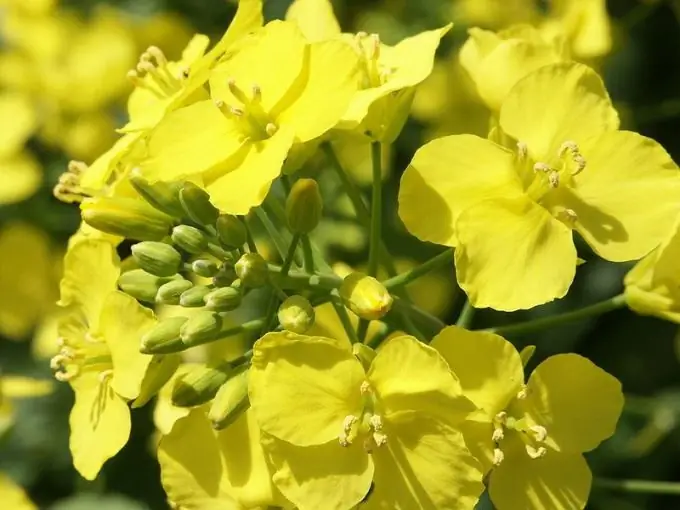Rape is not only a valuable forage plant. It is an excellent honey plant, which means it attracts pollinating insects to your garden plot. In addition, if, during the flowering phase, juicy canola stalks are crushed and embedded in the soil, it will serve as an excellent fertilizer and increase the amount of nitrogen and organic matter for those plants that will grow on this mete next year. But how to grow it correctly?

Necessary
- - rape seeds;
- - liquid organic fertilizer;
- - rope and peg for marking.
Instructions
Step 1
Prepare the soil for sowing. Rape prefers light soils with sufficient nutrients. Therefore, it is first necessary to well dig up the area intended for rapeseed, and loosen the topsoil. Rapeseed is sown in furrows to a depth of 0, 3-0, 5 cm. The distance between rows should be 15 cm. Mark the prepared area with pegs and a rope on the furrows. If the total area of the rapeseed plot is more than 50 m², make a 40-50 cm track every 50 cm of rows. This will greatly facilitate watering and tillage during the growth and development of plants.
Step 2
Sow seeds. It is possible to sow spring rapeseed in May; even return frosts and strong soil cold weather are not afraid of its seedlings and can tolerate them perfectly. Sowing of rapeseed is carried out with dry seeds without preliminary soaking. If you are not sure about the quality of the seeds, pre-soak them for 4 hours in a burgundy solution of potassium permanganate for surface disinfection, and then dry them. The seeding rate of rapeseed is 20 g per 1 cm². But since the seeds are very small, and the germination rate may not be 100%, you can sow them "by eye", pouring them into the prepared furrow as if you were planting carrots or beets. After sowing, cover with a layer of soil and hose with a fine spray.
Step 3
Do not forget to take care of the seedlings. Young rapeseed requires abundant watering, so if the soil is dry and rainfall is not expected, be sure to water it to keep it growing strong and healthy. After the plants rise 10-15 cm and show several pairs of leaves, it is necessary to feed with liquid organic fertilizer along with irrigation water. Mature rapeseed plants are excellent at fighting weeds, but they must be protected from the typical cruciferous pests. If you are growing a plant for subsequent embedding in the soil, it must be treated with cruciferous flea preparations before flowering. Of course, the flea will not have time to inflict much harm on it, but rapeseed can become a source of its reproduction, from which the pest will later spread to other cruciferous plants in your area.







